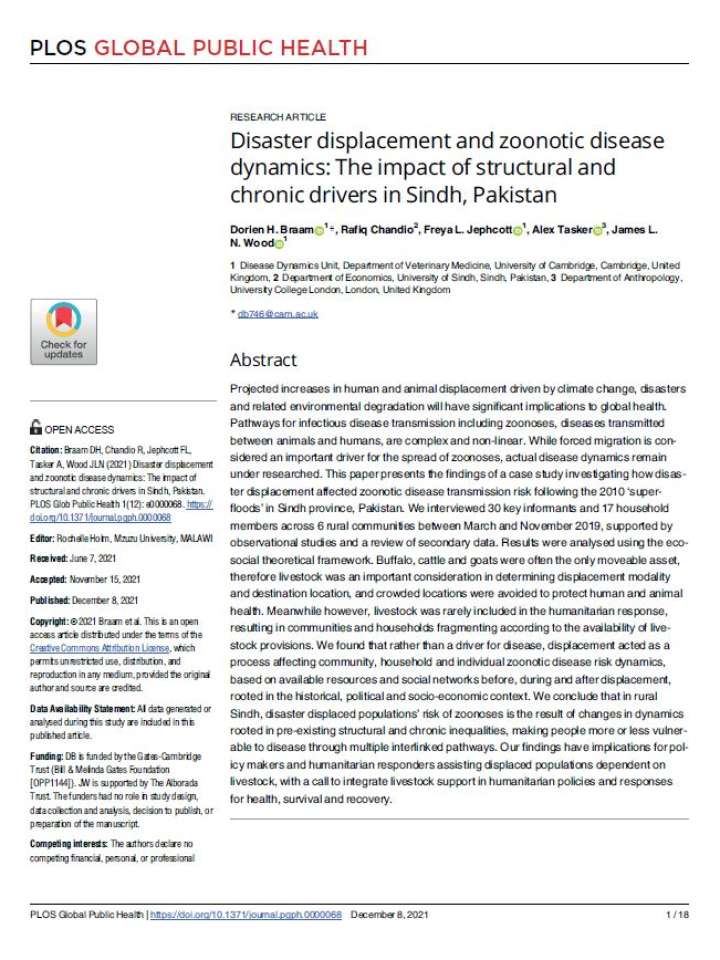Disaster displacement and zoonotic disease dynamics: The impact of structural and chronic drivers in Sindh, Pakistan
This paper presents the findings of a case study investigating how disaster displacement affected zoonotic disease transmission risk following the 2010 ‘superfloods’ in Sindh province, Pakistan. Projected increases in human and animal displacement driven by climate change, disasters and related environmental degradation will have significant implications to global health. Pathways for infectious disease transmission including zoonoses, diseases transmitted between animals and humans, are complex and non-linear. While forced migration is considered an important driver for the spread of zoonoses, actual disease dynamics remain under researched.
The authors found that rather than a driver for disease, displacement acted as a process affecting community, household and individual zoonotic disease risk dynamics, based on available resources and social networks before, during and after displacement, rooted in the historical, political and socio-economic context. They conclude that in rural Sindh, disaster displaced populations’ risk of zoonoses is the result of changes in dynamics rooted in pre-existing structural and chronic inequalities, making people more or less vulnerable to disease through multiple interlinked pathways. This paper's findings have implications for policy makers and humanitarian responders assisting displaced populations dependent on livestock, with a call to integrate livestock support in humanitarian policies and responses for health, survival and recovery.
Explore further
